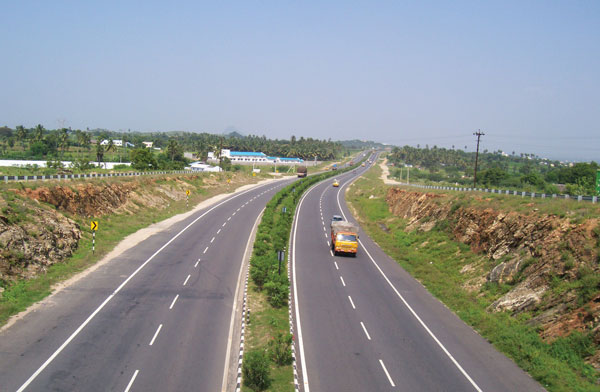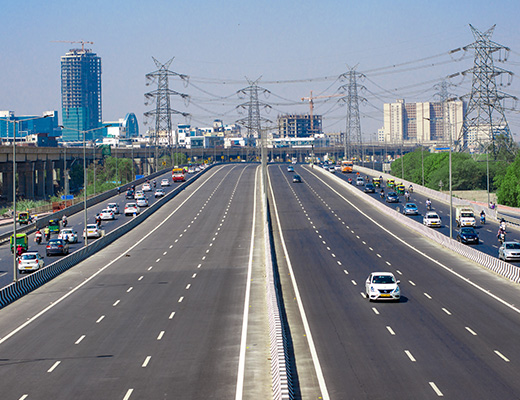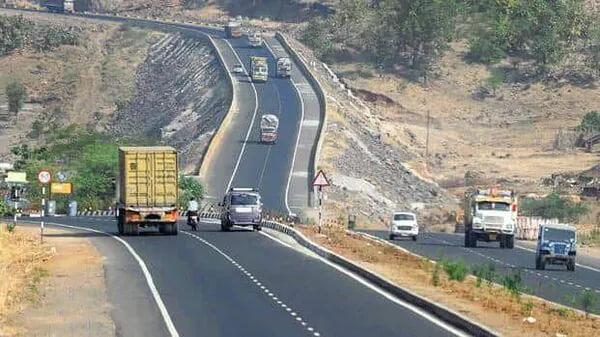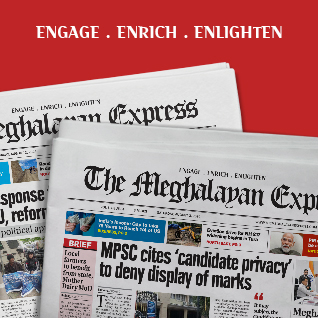Nijara Deka
The Government of India has initiated various national highway projects of significant investment in the Northeast. The highway projects are expected to enhance internal connectivity as well as the growth of the States’ economy and create new opportunities for people. The Government’s effort to enhance connectivity in the Northeast is visible in many major national highway development projects.
As the world is fast changing with the idea of creating logistical space, enhancing connectivity at all levels and creating more logistical channels for increasing economic interaction across the boundaries is also taking new shape. The new road projects along with other modes of transportation in the Northeast are fast changing the landscape of this region.
This is not only creating a new territorial boundary, but is also relocating the spatial economies towards a larger structural shift for an integrated regional space. Increasing the length of the roads and bridges across the region extending up to the border areas is fast reducing the distance and creating possibilities for economic materiality. Such road-building is a marker for economic space-making which looks for trade surplus, resource extraction, economic agglomeration, and labour mobility.

According to data from the Union Ministry of Road Transport and Highways, the total length of roads in the Northeast has increased from 4.81 lakh km to 6.38 lakh km between 2015 and 2019, registering a compound annual growth rate (CAGR) of 7.32 per cent. In the same time period, surfaced road grew at CAGR of 11.79 per cent. Compared to the national level proportion of surfaced road length in total road length, at 72 per cent, the Northeast has only 36 per cent of its total road surfaced. Besides, road-building in the region is not uniform across the eight Northeastern States. Based on the latest Government data, of the total road length in the Northeast, Assam covers 62 per cent, followed by Arunachal Pradesh at 9 per cent and Sikkim has the lowest share in total roads among the eight States. On the other hand, Assam has the lowest percentage of surfaced road among all the Northeastern States, which is far below the national level and most of the other Northeastern States, while Sikkim has the highest percentage of surfaced roads. Intra-regional variation exists with differences in their size, topography, and policy emphasis. Variation in the growth rate of road length also exists in all major types of roads in the region. During the period from 2015 to 2019, Arunachal Pradesh (21 per cent growth), Meghalaya (32 per cent growth), Mizoram (13 per cent growth), and Sikkim (13 per cent growth) have significantly grown their total road length.
Industrial backwardness in the region has been a major challenge since the post-Independence period, and the absence of connectivity infrastructure was seen as one of the biggest impediments in building an industrial hub in the region. Therefore, envisioning significant road projects was necessary to address this major economic challenge. The region is also known for its rural and household-based small-scale units. Rural roads are the key connecting roads for the daily survival of the people across the hills and remote parts of the State. However, the temporalities and suspension dimensions of rural and other link road projects should be considered according to the geospecific context of topography, climatic conditions, and the availability of local resources.
Among the diverse impacts of road projects, India’s economic liberalisation programmes in the 1990s, the Look East Policy, and the present Act East Policy prioritise the far-flung Northeast as the “connecting gateway” of India for transnational engagement with East and Southeast Asia. Echoing various significant studies on connectivity in the Northeast, heavy investment into road and communication facilities is necessary in a landlocked region such as the Northeast, in view of its peculiar topographical features, to enable expansion of markets within as well as between the States. Roads are directly related to markets in the context of the so-called frontier region, which is marked by its landlocked nature. The inadequacy of basic infrastructure limits the movement of both goods and people, especially in the hilly areas predominantly inhabited by tribes.
For the Northeast, both national highways and rural roads have a very significant impact on the regional economy. Existing empirical studies on road infrastructure in the region also support the argument that not only national highways but also rural roads directly impact life and development in the region. Although roads in this geographically advantageous region are expected to scale up the underdeveloped economy, empirical evidence stresses that equal effort needs to be given to the development of rural roads. It is imperative that major district roads, inter- and intra-village roads that connect with national highways, and trans-border highways be given equal importance in order to liberate the rural population from their present economic and physical hardship caused by lack of connectivity.

In addition, given the ecological sensitivity of various spaces like the Northeast, such logistical transformation sometimes is seen as a challenge to the existing eco-structure, which expectedly would reduce the forest and green land of the region. The policy measures may also simultaneously create a green infrastructure, which can balance the ecological sustainability. Green infrastructure, which is based on the principle of protecting and enhancing nature and natural processes can be consciously integrated into spatial planning and territorial development along with road building projects in the Northeast. This is currently being practised across various countries. Green infrastructure is a strategically planned network of natural and semi-natural areas with other environmental features designed and managed to deliver a wide range of ecosystem services.
Road construction in the Northeast should aim to provide adequate connectivity to people residing in remote areas, guided by the objective of balanced development in the region. The boom in transnational road projects will benefit the locals, and the positive impact of the Act East Policy will spread across the region only if there is adequate infrastructure for rural indigenous villagers.




